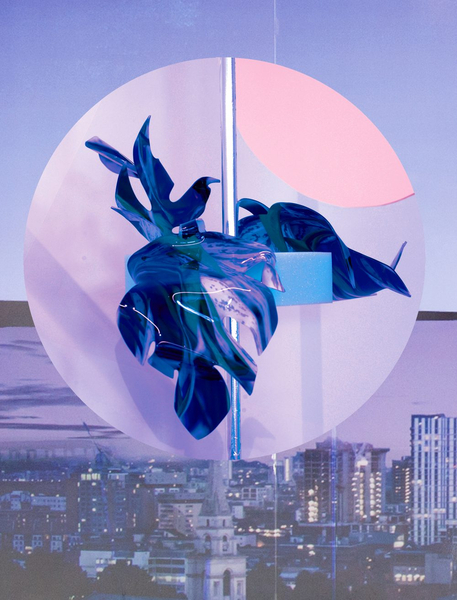
This year CONTACT expands its scope across Toronto and presents a broad spectrum of physically and conceptually engaging forms of photography. In keeping with this commitment to multiplicity, the 2018 Festival catalogue cover has been produced as a series of four, with each one featuring a single work. The images by Richard Mosse, Felicity Hammond, Charlie Engman, and Shelley Niro represent highly distinctive approaches to the photographic medium, yet they can each be considered touchstones for areas of common ground that have come together through the process of developing the curated program.
Focusing on collaborations, new discoveries, commissions, and premiere presentations, CONTACT’s 2018 Primary Exhibitions and Public Installations present outstanding, timely works by artists from Canada and abroad. Many of today’s critical global issues are the consequence of war, and the societal complexities that arise from it are examined by numerous artists throughout the Festival. Richard Mosse uses a military-grade thermal video camera that registers bodily presence from great distances to create highly complex works based on documentation of refugee camps. Along a similar vein, Trevor Paglen uncovers the physical markers of covert military and intelligence surveillance activities. Looking at the contested lands of Palestine, Basel Abbas and Ruanne Abou-Rahme construct poetic narratives that speak to the ongoing conflict permeating the area. The monuments of war are investigated by Daniel Alexander, whose images of cemeteries and epitaphs consider the impulse to commemorate; and the AGO’s photographic archives reveal personal accounts of the First World War and images capturing the technologies of mass destruction.
The built environment is also a prevalent theme this year, and a number of artists were commissioned to produce new site-specific work at prominent locations around the city. Felicity Hammond’s project examines how depictions of past and future urban developments dramatically shift and complicate the way that architecture is experienced, and Marleen Sleeuwits’ photographs are based on her elaborate transformations of nondescript architectural spaces. As a platform for artistic experimentation, our Public Installations activate a visual dialogue within their urban surroundings, as seen in the fleeting moments captured in Wang Yishu’s images positioned in a bustling subway station, the digital landscapes Scott Benesiinaabandan derives from monument sites to acknowledge Indigenous histories, and the expansive view of the cosmos by Elizabeth Zvonar that illuminates the grey concrete cityscape. Several venues, some of which are new to the Festival this year,provide challenging contexts for artistic interventions. While Dana Claxton’s hyper-saturated images of canoes transform a new gathering place beneath the Gardiner Expressway, Max Dean’s multimedia installation occupies a former soap factory slated for demolition. Replacing the traditional display of pictures, Piero Martinello’s portraits of radical individuals infiltrate the former home of a magistrate.
Numerous projects this year aim to challenge cultural stereotypes. Charlie Engman’s expansive body of work, which is being exhibited for the first time, features boundary-pushing photographs of his mother; John Edmonds’ public installation confronts presumptions about race, class, and gender based on clothing choices; and Sofia Mesa’s collaborative project commemorates individuals often deemed invisible by society. Through active dialogue with diverse communities, Esther Shalev-Gerz considers the politics of representation by examining the origins of museum objects. The culture and collecting practice of the museum is also scrutinized by Nadia Myre, who reclaims Indigenous skills and crafts devalued by colonization; and by Awol Erizku, whose still life compositions address the practice of whitewashing in art historical representation.
The pervasive theme of reclamation and empowerment resonates in Shelley Niro’s work, which redefines contemporary Indigenous experience and identity, particularly for women. Gestures of cultural understanding are performed by a number of artists whose images reveal complex narratives: Kent Monkman’s alter ego Miss Chief Eagle Testickle reclaims a controversial headdress; Aida Muluneh speaks to the struggles and achievements of the African diaspora across history; and Caroline Monnet’s scene of women in the film industry highlights an emerging sense of power and self-determination. Reframing social and cultural traditions, Bárbara Wagner and Benjamin de Burca’s work dynamically captures contemporary dance and music derived from various forms of colonial resistance in Brazil, and a vibrant group exhibition drawing from an archive of Canadian hip hop culture disrupts the status quo to provide high visibility for under-recognized photographers.
We invite you to experience all of the exceptional projects in CONTACT 2018’s curated program throughout the city. Revealing multilayered perspectives on the world, the works ultimately come together through interaction, dialogue, and celebration.